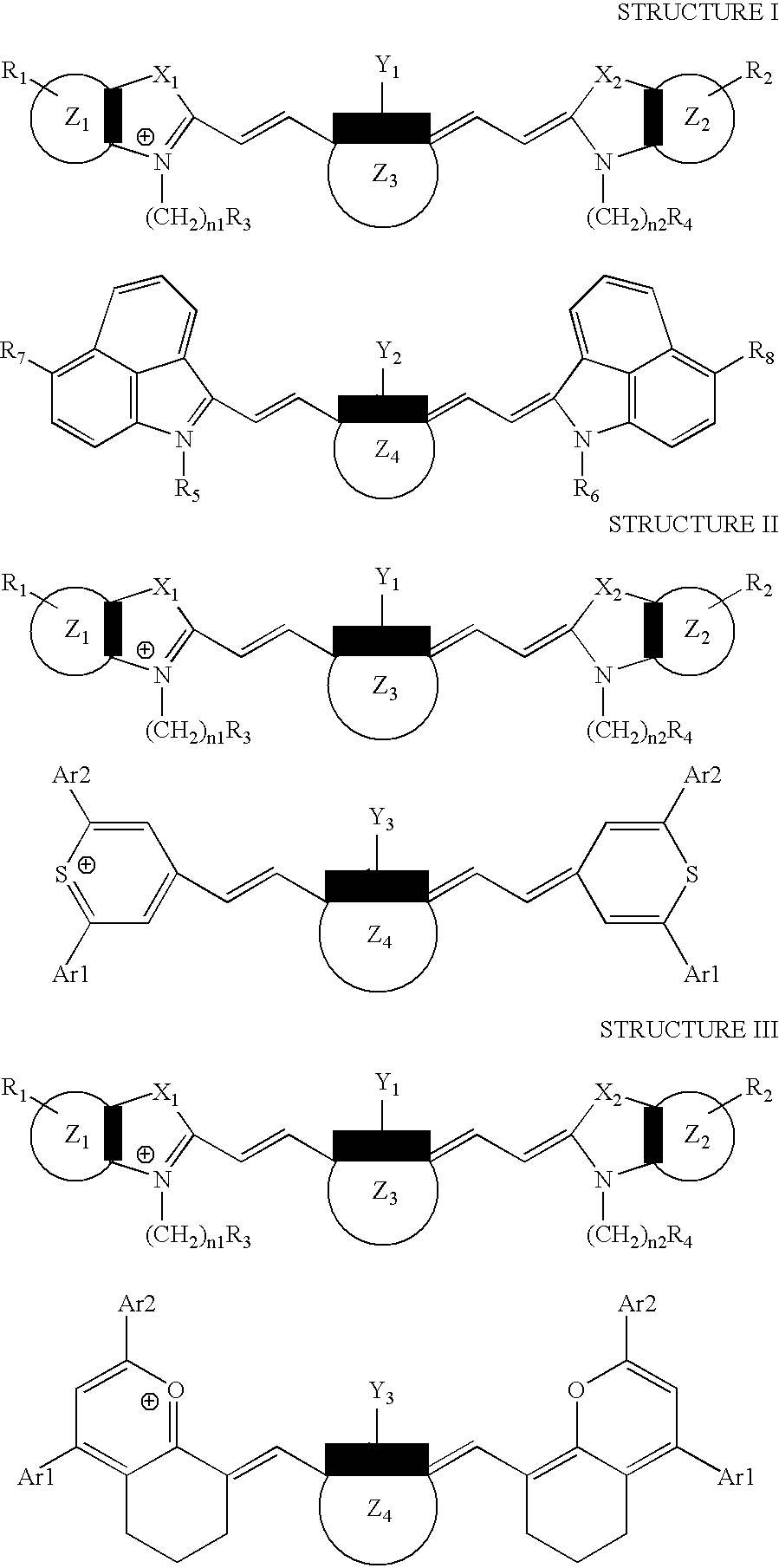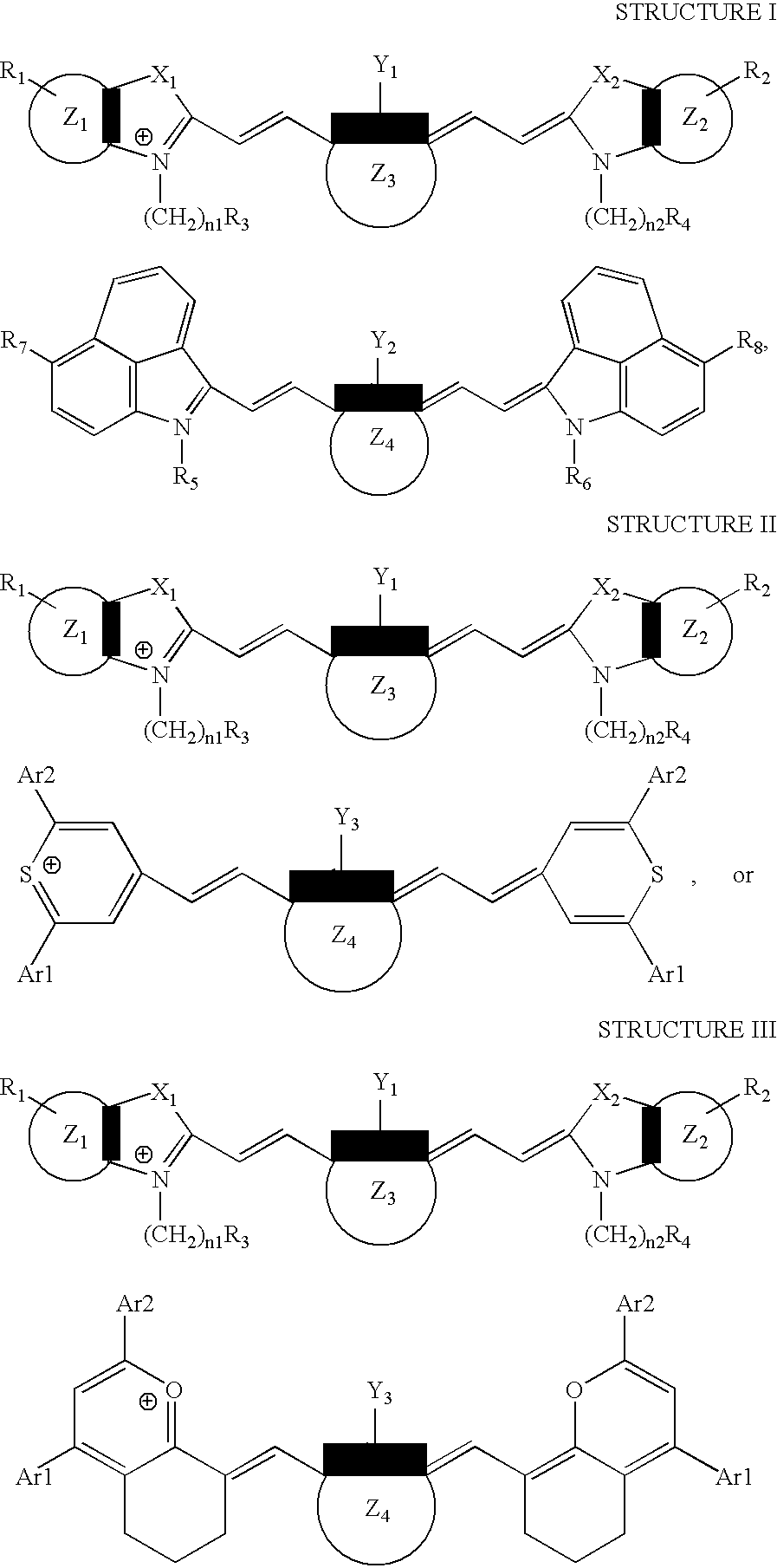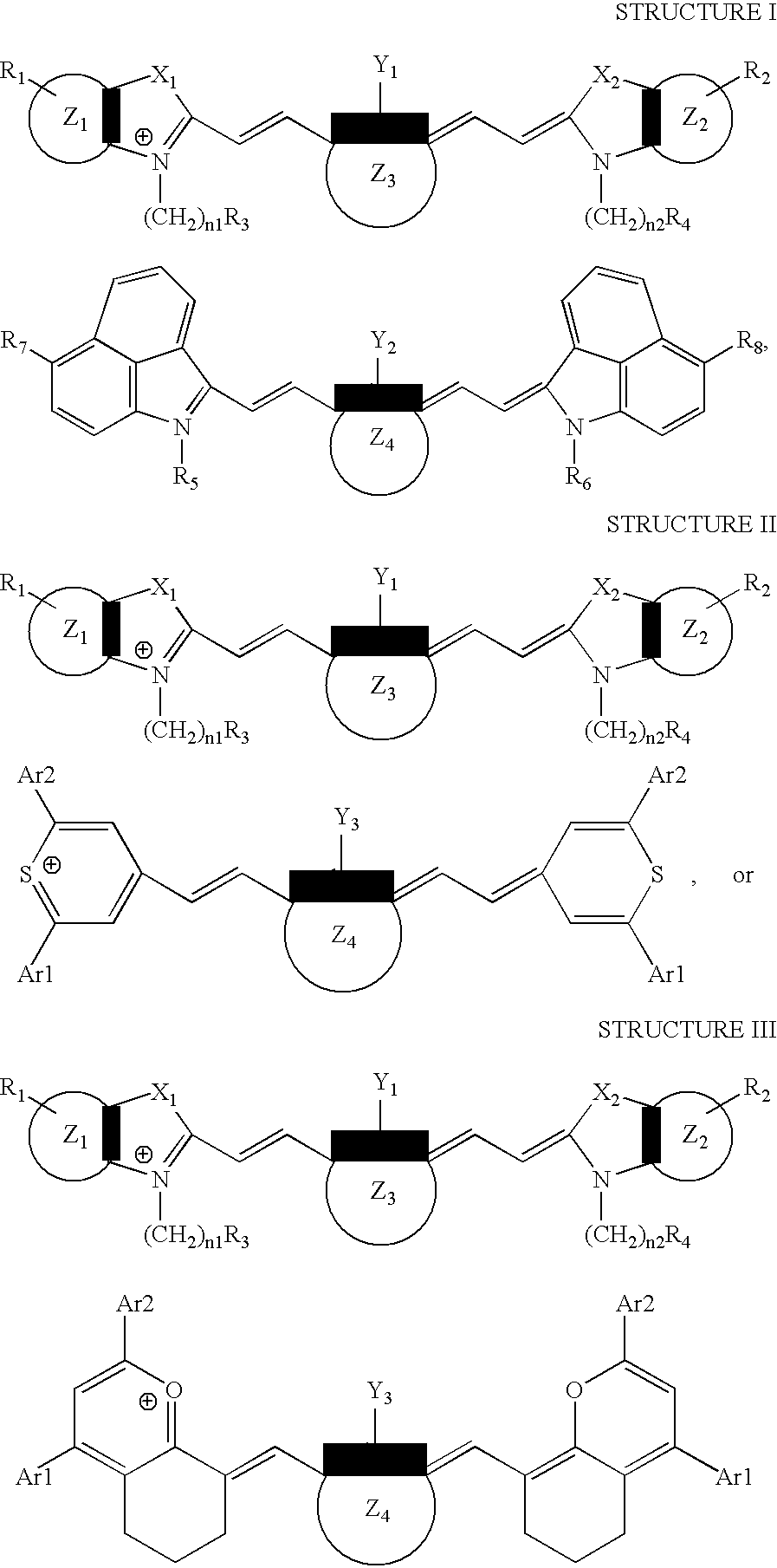Thermally imageable elements imageable at several wavelengths
a technology of imageable elements and wavelengths, applied in the field of lithographic printing, can solve the problems of time-consuming process, inability to easily image by imaging devices, and small change in mask dimension
- Summary
- Abstract
- Description
- Claims
- Application Information
AI Technical Summary
Benefits of technology
Problems solved by technology
Method used
Image
Examples
example 1
[0097]This example illustrates the preparation of (1-butyl-2-[2-[3-[(1-butyl-6-chlorobenz[cd]indol-2(1H)-ylidene)ethylidene]-2-chloro-1-cyclohexen-1-yl]ethenyl]-6-chlorobenz[cd]-indolium, compound with, 2-[2-[2-chloro-3-[(1,3-dihydro-1,1,3-trimethyl-7-sulfo-2H-benz[e]indol-2-ylidene)ethylidene]-1-cyclohexen-1-yl]ethenyl]-1,1,3-trimethyl-7-sulfo-1H-benz[e]indolium inner salt, a compound of the invention.
[0098]0.90 g of KAN707012 dye was dissolved in 10 g of water and 20 g of methanol. A solution of 0.70 g of IR 1048 dye in 10 g of water and 20 g of methanol was slowly added to this solution with stirring. The reaction mixture was stored in the dark at room temperature overnight. The resulting precipitate was filtered off, washed with 50 ml of acetone, and dried at ambient temperature for 12 hours. Yield: 1.5 g.
[0099]The absorption spectrum of the resulting compound showed maxima at 807 nm and 1003 nm.
example 2
[0100]A coating solution was prepared by dissolving 0.052 g of the compound prepared in Example 1, 1.05 g of LB6564, 0.30 g of LB744, 0.030 g of BASONYL® Violet 610, and 0.004 g of BYK 307 into 22 g of 1,1,3,3-tetramethylurea (Aldrich, Milwaukee, Wis., USA).
[0101]The coating solution was coated onto an electrochemically grained and anodized aluminum substrate post-treated with polyvinylphosphonic acid and the resulting element was dried at about 100° C. for about 1 minute on a conveyor oven. Dry coating weight: about 1.5 g / m2 (140 mg / ft2).
[0102]The resulting imageable element was imaged on a CREO Trendsetter 3244x image setter (CreoScitex, Burnaby, British Columbia, Canada) at 830 nm at a laser power of 15 W and a drum speed of 113 rpm (exposure energy 300 mJ / cm2). An additional imageable element was imaged in a Barco Crescent 42 Imagesetter (Barco Graphics, Vandalia, Ohio, USA) with 1064 nm IR laser at a laser power of 255 units. The resulting imaged imageable elements were develop...
example 3
[0103]This example illustrates the preparation of 4-[2-[3-[(2,6-diphenyl-4H-thiopyran-4-ylidene)ethylidene]-2-phenyl-1-cyclohexene-1-yl]ethenyl]-2,6-diphenylthiopyrylium compound with, 2-[2-[2-chloro-3-[(1,3-dihydro-1,1,3-trimethyl-7-sulfo-2H-benz[e]indol-2-ylidene)ethylidene]-1-cyclohexen-1-yl]ethenyl]-1,1,3-trimethyl-7-sulfo-1H-benz[e]indolium inner salt, a compound of the invention.
[0104]0.25 g of KAN707012 dye was dissolved in 2.8 g of water and 5.6 g of methanol. A solution of 0.20 g of IR 1040 dye in 2.8 g of water and 5.6 g of methanol was slowly added to this solution with stirring. The reaction mixture was stored in the dark at room temperature overnight. The resulting precipitate was filtered off, washed with 50 ml of acetone, and dried at ambient temperature for 12 hours. Yield: 0.4 g.
[0105]The absorption spectrum of the resulting compound showed maxima at 807 nm and 995 nm.
PUM
| Property | Measurement | Unit |
|---|---|---|
| Nanoscale particle size | aaaaa | aaaaa |
| Wavelength | aaaaa | aaaaa |
| Spectrum | aaaaa | aaaaa |
Abstract
Description
Claims
Application Information
 Login to View More
Login to View More - R&D
- Intellectual Property
- Life Sciences
- Materials
- Tech Scout
- Unparalleled Data Quality
- Higher Quality Content
- 60% Fewer Hallucinations
Browse by: Latest US Patents, China's latest patents, Technical Efficacy Thesaurus, Application Domain, Technology Topic, Popular Technical Reports.
© 2025 PatSnap. All rights reserved.Legal|Privacy policy|Modern Slavery Act Transparency Statement|Sitemap|About US| Contact US: help@patsnap.com



